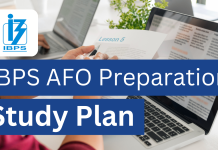The FCI AGM 2021 exam has been scheduled to be held on July 17 and 18, 2021. This gives us less than a month to prepare for it. Questions on Agriculture and Agriculture economy are assessed for 45 marks for the AGM (General Administration) exam. Whereas, for the remaining AGM posts and Medical Officer, the two subjects are tested for 30 marks.
In this article, we will review a few important questions that can be asked in the FCI AGM exam for the Agriculture and Agriculture Economy sections. Each question will be accompanied by a brief discussion about the same.
FCI AGM 2021: Important Questions for Agriculture and Agriculture Economy
- Which of the following agro-ecological zones contains alluvium-derived soil?
- North-Eastern Hills
- Eastern Coastal Plains
- Islands of Andaman & Nicobar and Lakshadweep
- Northern Plain & Central Highlands
- Central (Malwa) Highlands and Kathiawara Peninsula
Ans: 4
Northern Plain & Central Highland are hot semi-arid ecological regions with alluvium-derived soils. India has been divided into 20 agro-ecological zones. India has also been divided into 15 agro-climatic zones.
- In this system, the crops of different heights and vertical layers of leaf canopies, sunlight requirements and root system are grown together on the same field.
- Mixed cropping
- Intercropping
- Multi cropping
- Mono cropping
- Multi-storied cropping
Ans: 5
Mixed cropping is when two crops are mixed and sown in the same field at the same time. Intercropping involves sowing layers of crops in an alternating fashion. For example, if one row is wheat the other is mustard and so on. Many crops are sown together in multi-cropping. When only one type of crop is planted at a time in a field, it is called Mono cropping.
- Water Use Efficiency (WUE) is generally ___________ with sprinkler and drip irrigation than the surface method of irrigation.
- Equal
- Lower
- Higher
- Negligible
- At par.
Ans: 3
In drip and sprinkler irrigation, there is a pipe that has tiny holes in it. Water from these holes directly irrigates the root area of the plants thereby maximizing water irrigation and minimizing wastage of water.
- Which of the following is not an issue related to marketing problems in India?
- Fragmented supply chain
- Poor market infrastructure
- Presence of a large number of middlemen and cartelization
- Malpractices in unregulated markets
- Lack of modern road and rail infrastructure
Ans: 5
Lack of modern road and rail infrastructure is not directly related to marketing problems. These are transportation concerns.
- Electronic National Agriculture Markets eNAM, an online platform for helping farmers bid for the best prices across markets by integrating agricultural markets online was launched in the year ______.
- 2014
- 2018
- 2020
- 2017
- 2016
Ans: 5
Learn more about eNAM as it is an important topic for Agriculture and Agriculture Economy.
- For how many crops is the Minimum Support Price (MSP) announced by the government?
- 20
- 21
- 22
- 23
- 24
Ans: 3
There are 22 crops under the ambit of MSP and 1 crop under Fair and Remunerative Price, i.e., sugarcane.
- Movement of soil from raindrop splash and runoff water which often goes unnoticed but results in the loss of topmost soil is known as ___________.
- Sheet erosion
- Rill erosion
- Gully erosion
- Bank erosion
- Both B and C
Ans: 1
The topmost layer (or sheet) of soil gets washed away thereby eroding the soil. This usually occurs on a uniform slope of 1 percent or less. Sheet erosion usually remains unnoticed until the entire productive top-most layer is lost.
- Rice-Pulse crop pattern is commonly practiced in the regions of ___________.
- Chhattisgarh, Orissa, Bihar
- UP, Rajasthan, MP
- Tamil Nadu, Andhra Pradesh, Karnataka
- UP, Punjab, Haryana
- Maharashtra, MP, Rajasthan
Ans: 1
Rice is grown in many parts of the country. That is why you must bear in mind that areas cultivating pulses must also be considered to obtain the correct answer. For example, rice and wheat are cultivated in UP, Rajasthan and MP but pulses are not.
- After independence, an Act was passed by which around 30 lakh tenants and share-croppers acquired ownership rights over a total of 62 lakh acres of land all over the country. Name this act.
- Land Ceilings Act
- Zamindari Abolition Act
- Ryotwari Act
- Tenancy Reforms
- Zamindari Act
Ans: 2
The Zamindari and Rytowari Acts were in function during the period of the British Raj in India. Once India became independent, the Zamindari Act was abolished soon after.
- The Indian Council of Agricultural Research (ICAR) set up an All-India Soil Survey Committee in 1953 which divided the Indian soils into _____ major groups.
- Seven
- Eight
- Four
- Twelve
- Six
Ans: 2
There are 8 major types of soils divided based on colour. These are- Alluvial Soil, Black Soil, Red Soil, Laterite Soil, Arid and Desert Soil, Saline and Alkaline Soil, Peaty / Marshy soil and Forest Soil.
- Which one of the following is categorised under direct subsidies given by the government to the farmer to maintain their continuance under agriculture?
- Farm Loan Waiver
- Kisan Credit Card
- Rebate in fertilizer
- Interest-free loan
- Reduction in electricity bill
Ans: 4
Direct subsidies are given via direct cash transfer to the beneficiaries. The other options are examples of indirect subsidies given to farmers.
- Which of the following is not the responsibility of the Central Government for the Public Distribution System?
- Procurement of food grains from farmers at a Minimum Support Price (MSP)
- Sells to state at Central Issue Prices
- Transportation of the grains to the storehouses in each state
- Providing food grains to states during a time of calamity
- Transportation of food-grain from storehouses to fair price shops
Ans: 5
The transportation of food-grain from storehouses to fair price shops is the responsibility of the State Governments.
- Keeping food processing in mind, the Ministry of Food Processing Industries launched Operation Greens again in the year 2020 with the target to cover which of the following crops under it?
- Tomato, Onion, Potato
- Tomato, Pumpkin and Potato
- Tomato, Onion, Potato to all fruits
- Tomato, Onion, Potato to all vegetables
- Tomato, Onion, Potato to all fruits and vegetables
Ans: 5
This Operation Greens was initially launched in 2018 for tomatoes, onions and potatoes. It was relaunched in 2020 and its benefits were extended to all fruits and vegetables.
- Which of the following is/are possible outcome(s) of Land Reforms in India?
- Abolition of middlemen like landlords
- Land ceiling-cap size of landholding to an individual/family
- Land possession-mandatory records of landholding
- Increased productivity due to land distribution tillers/tenants becomes the owner, thus productivity increased
- All of these
Ans: 5
Land reforms include the regulation of ownership, operation, leasing, sales and inheritance of land. Thus, all the options are correct.
- When there is one buyer and a large number of sellers, the market condition is known as _________.
- Perfect market
- Monopoly
- Oligopoly
- Duopoly
- Monopsony
Ans: 5
In Monopsony, a single buyer substantially controls the market. Monopoly is the opposite of Monopsony. There is only one seller and several buyers.
- The primary and basic function in the process of agriculture marketing is _________.
- Storage
- Transportation
- Procurement
- Processing
- Wholesale marketing
Ans: 3
The first step in agriculture marketing is procurement. The Food Corporation of India procures the goods at an MSP.
- What is the productive age of layer in commercial poultry production?
- 10 weeks
- 5 weeks
- 18 weeks
- 72 weeks
- 81 weeks
Ans: Layer poultry is reared for egg-laying purposes. The productive age can be between 72-78 weeks.
- When was the Antyodaya Anna Yojana (AAY) scheme launched by the government of India?
- July 1988
- May 1999
- December 2000
- October 2005
- Jan 2000
Ans: 3
Antyodaya Anna Yojana (AAY) is a government-sponsored scheme to provide highly subsidised food to millions of poor families. It was launched during Atal Bihari Vajpayee’s Prime Ministership.
- What is the vision of FCI?
- Ensuring food security for citizens of the country.
- Efficient procurement at MSP, storage and distribution of food grains.
- Ensuring availability of food grains and sugar through appropriate policy instruments; including maintenance of buffer stock of food grains.
- Making food grains accessible at reasonable prices, especially to the weak and vulnerable sections of the society under PDS.
- To enhance the research related to increased food grain production and food inflation.
Ans: 1
- Biotic stresses are one of the important factors which affect crop production. What is the meaning of biotic factors?
- Damage due to insect
- Damage due to fungus
- Damage due to bacteria
- Damage due to weeds
- All of the above
Ans: 5
There are two types of factors that affect crop production, they are, biotic (living) and abiotic (non-living) factors. As we can see that all of the above are living organisms, therefore, ‘all of the above’ is the correct answer.
These were just some sample questions that can be asked in the Agriculture and Agriculture Economy section of the paper. You can find all study lessons related to Agriculture and Agriculture Economy on our AgriBee channel. You should also review the entire syllabus for FCI AGM and particularly the Agriculture section because there is little time left before the exams. The syllabus is quite concise and basic so you should be able to score well if you prepare well for the exam. Join our online course as you prepare to ace the FCI AGM exam.
At ixamBee, you can find online courses that will help you prepare for the government exams of your choice. We also provide previous years’ questions papers and free mock test series for your preparation.
At ixamBee you can find free Online Test Series, GK updates in the form of BeePedia, as well as latest updates for Bank PO, Bank Clerk, SSC, RBI, NABARD and Other Government Jobs.
Also read
FCI AGM Exam Date 2021: Latest Update
FCI AGM 2021: Preparation Strategy for Management and Ethics















